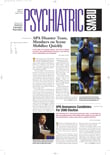The U.S. Drug Enforcement Administration (DEA) has acknowledged that there is no federal regulatory or legislative requirement that patients taking Schedule II controlled substances (CII) long term must be seen by their physician once a month just to receive a new prescription for continued medication therapy.
Indeed, the DEA said, physicians can mail a new prescription for a CII drug to patients or their pharmacy. To facilitate timely dispensing of the medication without requiring clinically stable patients to come in for a monthly office visit, physicians may even fax CII prescriptions to pharmacies. However, when patients pick up the medication, they will still be required to present the signed and dated original.
The agency's comments were contained in the document “Clarification of Existing Requirements Under the Controlled Substances Act for Prescribing Schedule II Controlled Substances” in the August 26 Federal Register.
The DEA added that its interpretation was based solely on federal law. Some states have regulations imposing other restrictions on the writing of CII prescriptions, such as maximum allowed quantities or days of supply. In addition, some states do not allow a CII prescription to be faxed.
The clarification is the latest development in a controversy that began in August 2004, when the agency posted a “Frequently Asked Questions” (FAQ) document on its Web site regarding the prescribing of CII drugs specifically for pain control. That document endorsed the practice of writing multiple CII prescriptions on a single date with instructions included on the prescriptions for filling on later dates. However, the FAQ was soon removed from the agency's Web site, and in November 2004 the DEA issued an interim policy statement banning that practice.
In the latest clarification, the DEA reiterated that interim policy, noting that physicians who write multiple prescriptions for the same CII drug in a single office visit with instructions for filling those prescriptions on different dates are essentially writing a prescription authorizing refills of a CII substance. According to the federal Controlled Substances Act, no prescription for a controlled substance in Schedule II may be refilled.
The August 26 clarification was issued in response to numerous comments that the DEA had received in the public comment period after the interim policy was published. APA, along with the American Academy of Child and Adolescent Psychiatry, submitted lengthy comments noting that “the method of preparing multiple prescriptions described in the FAQ comports with applicable law” and “minimizes extraneous patient visits” while allowing patients to have a “steady stream of prescription medication at hand for a prolonged period.”
The DEA issued the clarification to make clear that “there is no such requirement in the [Controlled Substances Act] or DEA regulations.” The statement continued, “What is required, in each instance where a physician issues a prescription for any controlled substance, is that the physician properly determine there is a legitimate medical purpose for the patient to be prescribed that controlled substance and that the physician be acting in the usual course of professional practice.”
The DEA added that physicians “must, therefore, use the utmost care in determining whether their patients for whom they are prescribing Schedule II controlled substances should be seen in person each time a prescription is issued, or whether seeing the patient in person at somewhat less frequent intervals is consistent with sound medical practice and appropriate safeguards against diversion and misuse.”
“Clarification of Existing Requirements Under the Controlled Substances Act for Prescribing Schedule II Substances” is posted at<www.deadiversion.usdoj.gov/fed_regs/rules/2005/fr0826.htm>.▪
